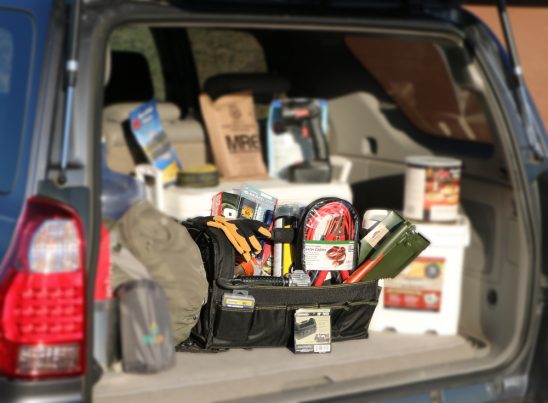How to create an at-home survival kit on a budget
Sunday, March 19, 2017 by Earl Garcia
http://www.bugout.news/2017-03-19-how-to-create-an-at-home-survival-kit-on-a-budget.html

Difficult and unpredictable circumstances such as calamities and disasters have driven more households in the U.S. to gear up their emergency preparedness. A 2015 report by the U.S. Census Bureau and the U.S. Department of Housing and Urban Development showed that more than half of American households reported having an emergency evacuation kit. Housing statistics also revealed that preparedness level varied by metropolitan area. For example, according to the report, about 70 percent of homes in Tampa and Miami have an emergency preparedness kit, while Austin, Chicago and Minneapolis had the lowest rates of households with a survival kit. Data also revealed that 54.3 percent of American households have an emergency water supply.
Creating budget-friendly survival kit at home
Survival kits always come in handy whenever calamities and disasters occur. An article on the website Tactical Intelligence shares an extensive list of suggested items needed to create a three-tiered survival kit.
According to the article, the first tier survival kit would contain items that are readily available and are carried at all times. The first tier survival kit serves as a fallback in times of emergencies such as being stranded somewhere. Included in this tier are folding knife, fire starter and cordage. Naturally considered the most essential survival tool, the article recommends purchasing high quality folding knife for emergencies. A fire starter is the next best thing to have during emergencies. The article suggests that users keep a small tinder of cotton balls soaked in Vaseline to easily light a fire. Cordage also plays a key role in survival during emergencies. Cords are used as fishing line, lashings, bowstrings and a lot more. A personal protective device, pinch light and coin-sized compass are also considered essentials in the first tier of the survival kit. (RELATED: Follow more news about survival strategies at Survival.news)
The second tier survival kit is defined as items that can be easily packed in a small bag and kept in the trunk of a car. A full-sized knife and compass, water containers and purifiers and first-aid kits, as well as flashlights and fire starters, cordage and simple shelter, are some of the items included in the second tier. Just as in the first trier, fire starters and cordage remain vital parts of this survival tier. A heavy-duty fixed knife is also a fixture in this tier. Water containers, which can be easily stowed away in the bag makes for an ideal survival item. Water purifying systems should also go hand in hand with the container, as these items may help guarantee survival during emergencies where water supply might need intensive cleansing. Ranger Gear’s water purifying systems help eliminate many different pathogens, making them an ideal survival kit staple.
The third tier survival kit refers to items that could be stored in a good-sized bag and can be toted around for as long as 72 hours. The items included in this kit should be easily accessible and ready to go at any moment. Storing one at your home would be a good idea. The area of residence should also play a part in planning for this tier, as city dwellers might have different needs than those living in the country. Included in this tier are personal safety kits, shelter and water as well as fire starters and food. Personal safety kits should include personal belongings and a first aid kit. Shelters such as hammocks and sleeping bags are also considered top essentials for this tier. Storing enough supply of water, and a water purifying system may prove handy, especially when the water supply is limited. Foods such as canned goods and freeze-dried edibles are also a must-have for every survival kit.
Sources:
Tagged Under: Tags: handy survival prepping gear, prepping, prepping items, survival
RECENT ARTICLES
COPYRIGHT © 2017 · BUGOUT NEWS


